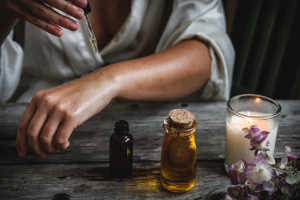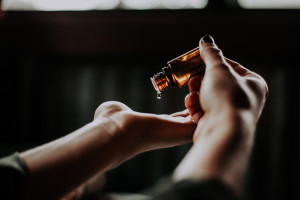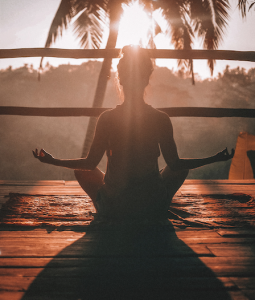Self Massage for Stress Relief: 4 Relaxation Techniques to Try
Stress levels are on the rise. 84% of Americans feel stressed at least one day a week. With financial pressure, uncertainty, and health worries, it’s no surprise that stress levels are high. To combat stress effectively, you need to find a way to activate your body’s relaxation response. Self-massage can help relax the muscles, relieve stress, and ease tension.
What is Self Massage?
Between work and other commitments, it can be difficult to visit a professional masseuse frequently. But you don’t always need a professional to access the benefits of massage.
Self-massage is when you use your own hands to stimulate your muscles. Usually, it involves kneading the muscles and applying gentle pressure to certain parts of the body. Self-massage techniques are ones you can do yourself to trigger specific points in the body and help to relax your muscles. You can combine self-massage with aromatherapy oils and deep breathing to encourage complete relaxation.
Sitting at a desk all day, as well as the mental and physical stressors of life, can all take their toll on your body and mind. Self-massage can be helpful for relaxing and de-stressing after your day.
The Benefits of Massage for Stress
After a hard workout, many people already use self-massage to support muscle recovery and improve range of motion. But the benefits of self-massage can go further. Going for a professional massage can feel wonderful as a skilled masseuse can identify tension and use specific techniques to release pressure throughout the body. If you can’t get a professional massage, self-massage is the next best option.
One study found that massage therapy helps to reduce stress and promote mental health. A recent clinical trial highlighted the benefits of self-massage with daily massage oil. They found that participants reported:
-
Lower stress levels
-
Improved quality of sleep
-
Better overall quality of life
The results of this study were similar to those receiving regular professional massages. This is important considering the time and financial constraints that many people face in securing a regular massage. Self-massage is often a crucial part of Ayurvedic medicine, which originated in India thousands of years ago and focuses on a holistic approach to health.
Like massage, self-massage may help to ease:
-
Stress
-
Anxiety
-
Pain
-
Muscle tension
-
Headaches
4 Self-Massage Relaxation Techniques for Stress to Ease Tension
For most self-massage relaxation techniques, you can use your hands. But for some, you may benefit from using objects like a tennis ball or foam roller. Here are four techniques you can try to incorporate self-massage into your routine.
-
Tension Headaches
Tension headaches typically occur when your neck or scalp muscles become tight. Muscles can contract in response to stress, anxiety, and depression.
First, turn away from your computer and switch off your phone to have a screen break. Sit on a chair upright and close your eyes. Take your two middle fingers and place them on your temples. Move your fingers in small circles adding a little pressure. Then, slowly move your fingers to your eyes slightly, then back to your temples.
-
Tight Shoulders
It’s easy to carry tension in your shoulders. Stress, sitting for a long day, or carrying heavy loads can make you feel like you have a lot of pressure on your shoulders.
Try to relax and lower your shoulders away from your head. Pinpoint the tight area with your fingers. Start moving your fingers in a circular motion clockwise and anticlockwise for up to five minutes.
-
Ease Neck Strain
The neck is another key area that carries a lot of stress. It has a big job and is always busy doing something. Poor posture and stress can take their toll on your neck.
Sit up with your back straight and pull your chin forwards to feel a stretch for a few seconds. Then, lift your head back up and repeat a few times with slow and relaxing breaths.
-
Roll Out Body Kinks
It may be helpful to have a tennis ball or a foam roller for specific pressure points and keep on top of those kinks. You can use a tennis ball for kneading out any soreness in your feet, especially if you’re a runner. Whether it’s hips, calves, or feet, you can usually apply a little pressure to start releasing some of that tension in the body.
Don’t Forget to Breathe for Stress and Anxiety
While self-massage may not be a miracle cure for all things stress and anxiety, it can help you to relax and ease tension in the body. One study found that the stress hormone cortisol drops after massage while dopamine and serotonin increase.
Although deep breathing isn’t technically a massage, it can help you when you’re on the brink of a stressful day. If you don’t have time to do anything, taking a few deep breaths can help to make you feel calmer and back in control of your emotions.
Whatever works for you, finding a way to manage stress is essential for your overall health and well-being. Often, it’s challenging to cut stress out of your life altogether. But you can look to reduce and manage stress. When your body holds tensions, it can start to show itself in physical symptoms. By releasing muscle tension and easing stress, you can help relax your body and mind to cope with stress more effectively.
Join Our Community
Archives
- January 2023
- December 2022
- September 2022
- August 2022
- June 2022
- May 2022
- April 2022
- March 2022
- February 2022
- January 2022
- December 2021
- November 2021
- October 2021
- September 2021
- August 2021
- July 2021
- June 2021
- May 2021
- March 2021
- September 2020
- August 2020
- July 2020
- June 2020
- May 2020
- April 2020
- March 2020
- February 2020
Subscribe

Sign up to receive FREE toolkit
From Dr. Hyman, #1 NY Times & Amazon Author
We never spam or sell your e-mail








Follow Our Every Move